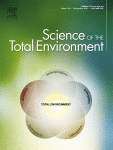Ver ítem
- xmlui.general.dspace_homeCentros Regionales y EEAsCentro Regional Patagonia SurEEA Santa CruzArtículos científicosxmlui.ArtifactBrowser.ItemViewer.trail
- Inicio
- Centros Regionales y EEAs
- Centro Regional Patagonia Sur
- EEA Santa Cruz
- Artículos científicos
- Ver ítem
Isotope geochemistry as a natural tag of fish in Patagonian freshwater environments: the invasive Chinook salmon case
Resumen
Patagonian aquatic environments have been invaded since the end of the last century by different species of salmonids.Knowing the natal origin and homing/straying rate of the salmonids in colonised environments is essential to understanding the dispersal mechanisms and developing management plans. In the last two decades, Chinook salmon Oncorhynchus tshawytscha showed the greatest natural dispersal capacity in Patagonia. The main goal of this study was to
[ver mas...]
Patagonian aquatic environments have been invaded since the end of the last century by different species of salmonids.Knowing the natal origin and homing/straying rate of the salmonids in colonised environments is essential to understanding the dispersal mechanisms and developing management plans. In the last two decades, Chinook salmon Oncorhynchus tshawytscha showed the greatest natural dispersal capacity in Patagonia. The main goal of this study was to evaluate the environmental strontiumisotope ratio (87Sr/86Sr) as a potential natural tag to infer the natal origin and ontogenetic habitat use of salmonids in Patagonia, specifically Chinook salmon. 87Sr/86Sr ratio was determined in water samples from 26 sites distributed in 14 Atlantic and Pacific basins in lowand high water seasons. Environmental 87Sr/86Sr showed greater spatial than temporal variation, revealing great potential as a tool to infer the natal origin and life history of several migratory fish species in Patagonia. Otolith core-to-edge 87Sr/86Sr profiles were also analysed in108 Chinook salmon from six basins. A cluster analysis based on the Unweighted Pair Group method (UPGMA) and Euclidean distances without prior classification grouped the sampled rivers into five main groups with significantly different (p < 0.05) isotopic ratios, sometimes integrated basins with different slopes (Atlantic or Pacific). The cluster analysis based on the natal 87Sr/86Sr period in otolith (∼natal origin) showed clear segregation between the Atlantic and Pacific samples. A mismatch between water and otolith natal 87Sr/86Sr ratio was detected in some Atlanticbasins (e.g. De las Vueltas River in Santa Cruz Basin) and Pacific (e.g. Liquiñe Basin) and, which could be explained either by straying behaviours or by large geochemical variability between tributaries, within river systems. Our results showed that 87Sr/86Sr is a useful natural tag to trace the life history of migratory fishes in Patagonia, especially for invasive species such as Chinook salmon.
[Cerrar]

Autor
Avigliano, Esteban;
Niklitschek, Edwin;
Chung, Ming-Tsung;
Diaz, Boris Gaston;
Chalde, Tomás;
Di Prinzio, Cecilia;
Solimano, Patricio;
Llompart, Facundo;
Garcés, Cristóbal;
Diaz Ochoa, Javier;
Aldea, Cristian;
Huang, Kuo-Fang;
Duquenoy, Camille;
Leisen, Mathieu;
Volpedo, Alejandra;
Fuente
Science of The Total Environment 873 : 162395 (May 2023)
Fecha
2023-05-15
Editorial
Elsevier
ISSN
0048-9697
Formato
pdf
Tipo de documento
artículo
Palabras Claves
Derechos de acceso
Restringido
 Excepto donde se diga explicitamente, este item se publica bajo la siguiente descripción: Creative Commons Attribution-NonCommercial-ShareAlike 2.5 Unported (CC BY-NC-SA 2.5)
Excepto donde se diga explicitamente, este item se publica bajo la siguiente descripción: Creative Commons Attribution-NonCommercial-ShareAlike 2.5 Unported (CC BY-NC-SA 2.5)


